Can you guess what patents the images above relate to? No? Neither could we !
The law of patents can be a murky, and somewhat controversial, field. On the one side, patents are designed to give inventors the right to exclude others (generally in the US for 20 years) from using a new technology. On the other side, some think patents stifle innovation and that many patents end up being granted for ‘obvious’ inventions.
In the world of filmmaking and special effects, patented technological innovation has of course enabled incredible imagery to be brought to the screen. And not without controversy, too. Significant patents disputes in past years have raged in the area of digital painting and more recently over patents for holograms and 3D stereo conversion.
Despite some of these problems, the world of patents can be a fascinating one to explore, especially since a fair amount of detail and imagery is published with a patent application – and is freely available. So, that’s the theme behind this insider article. We’ve identified four patents to explore relating to motion capture, practical effects, AR/MR/VR, and hair sims – check them out below.
Three-dimensional motion capture – US7848564
Inventors: Steve Sullivan, Colin Davidson, Michael Sanders, Kevin Wooley
Original Assignee: Lucasfilm Entertainment Company Ltd.
Filed in 2006
Perhaps the assignee (and the image) gives this patent away, but ‘Three-dimensional motion capture’ is more commonly known as Industrial Light & Magic’s IMOCAP or Image Based Motion Capture Technology system. IMOCAP first came into prominence via its use on the set of Pirates of the Caribbean: Dead Man’s Chest, in which the crew of Davy Jones’ Flying Dutchman wore distinctive gray tracking suits with markers that would later be replaced with the barnacle-encrusted CG creatures.
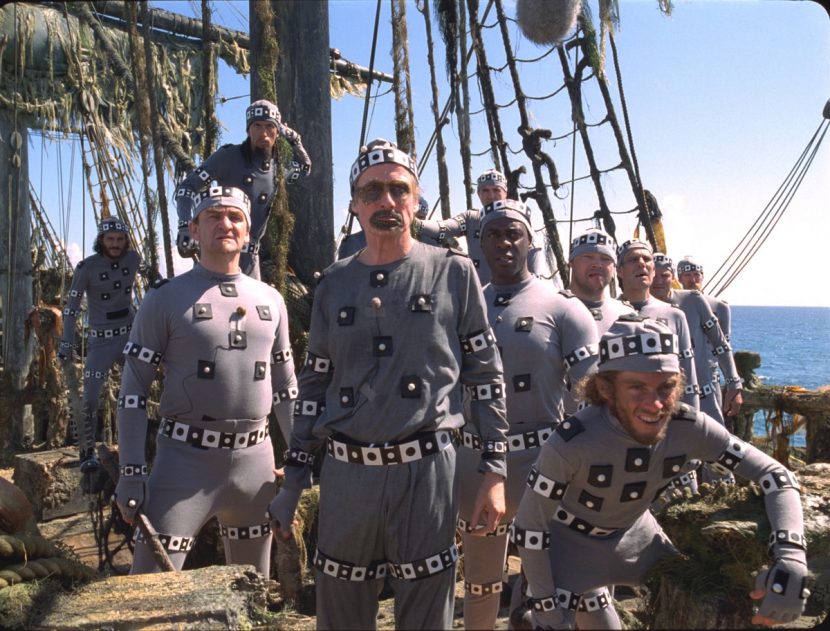
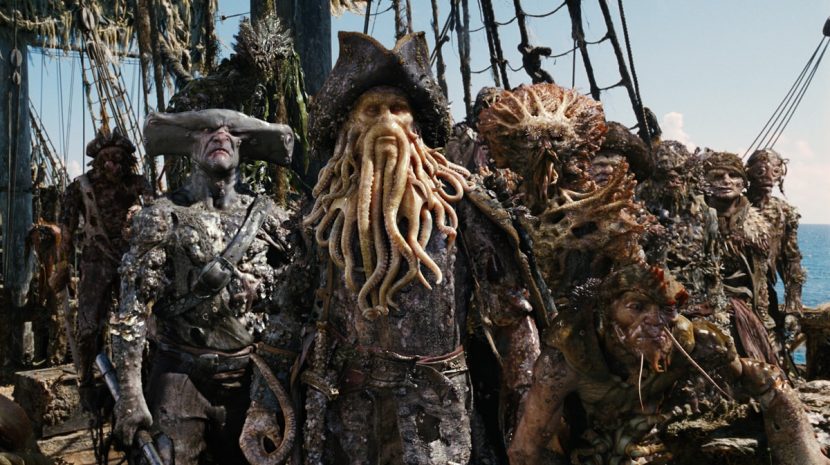
IMOCAP works by utilizing on-set witness cameras to triangulate the positions of the joints – pinpointed by markers on the suits – to produce useful mocap data. The beauty of the system is that it provided meaningful data on set – in almost any conditions – whereas previously such data could only really be acquired on a controlled stage. The system has continued to be used, from Mark Ruffalo’s Hulk in Avengers to the lead characters of Teenage Mutant Ninja Turtles. Behind the scenes images featuring a character in an IMOCAP suit have also cropped up for The Force Awakens. Several members of ILM’s team – Steve Sullivan, Kevin Wooley, Brett Allen and Colin Davidson – received a Scientific and Technical Achievement award from the Academy for IMOCAP in 2010.
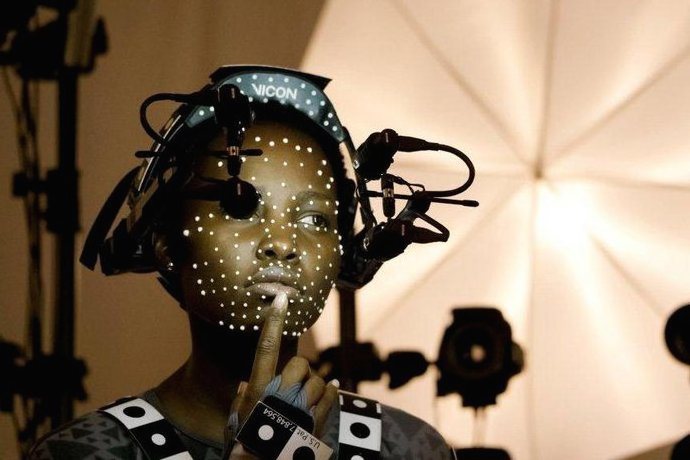
The patent describes both the suit and its rigid markers and the computer system used for tracking the markers. If you’re not keen on reading the whole thing, here’s the abstract:
In one general aspect, a method is described. The method includes generating a positional relationship between one or more support structures having at least one motion capture mark and at least one virtual structure corresponding to geometry of an object to be tracked and positioning the support structures on the object to be tracked. The support structures has sufficient rigidity that, if there are multiple marks, the marks on each support structure maintain substantially fixed distances from each other in response to movement by the object. The method also includes determining an effective quantity of ray traces between one or more camera views and one or more marks on the support structures, and estimating an orientation of the virtual structure by aligning the determined effective quantity of ray traces with a known configuration of marks on the support structures.
The full text, and images, relating to the patent is here.
Method and system for generating artificial tornadoes and related vortex phenomena – US 5971765 A
Inventors: James Gill, Dylan Hixon, James Lux, Martin Becker
Original Assignee: Reel EFX, Inc.
Filed in 1996
Haven’t you always wanted to create your own “tornadoes and other vortex phenomen in an open air, free space environment”? Well, Reel EFX, a company well-versed mechanical and special effects, did just that. Their ‘Man-Made Tornado’ machines – which ranges in size from 10 to 50 feet – have been used in TV commercials and specials and in live demos to create everything from dust devils to fire vortexes and raging tornadoes. The larger of the machines even incorporates a Bell Jet helicopter blade.
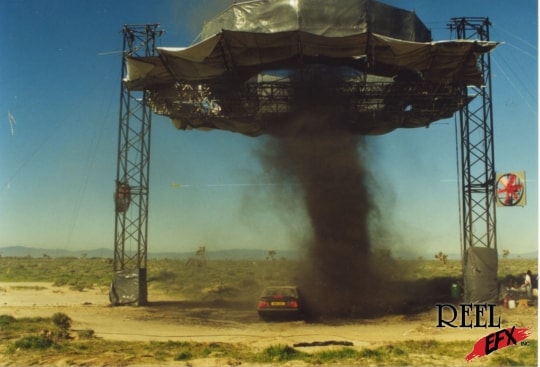
How the tornado machine works can be garnered from the patent abstract:
The system includes a flat surface or deck suspended above the ground, a circular hole in the center of the deck, a means for creating an updraft through the hole in the deck and fans or other air moving means for creating a swirling air flow. Preferably, the fans for swirling the air are angled approximately 45 degrees relative to the vertical axis of the updraft flow through the center hole. For swirling the air at higher elevations, as well as at ground level, a multi level fan arrangement having the layers of fans spaced relative to the deck is used. Alternatively, a single level of fans are used in conjunction with louvers or vanes for deflecting the blown air into a fan shape.
Above: 1995 Volvo commercial which used a 40 foot version of Reel EFX’s tornado machine
Reel EFX sued Universal Studios in 1997 when the film studio was preparing a tornado theme park attraction based on their popular Twister release. Interestingly, a cursory scan of the US patents database reveals that Universal Studios now holds a man-made tornado patent of its own, which it applied for in 1999.
You can find more examples of how Reel EFX has used the tornado machine on their website.
The full text, and images, relating to the patent is here.
Three dimensional virtual and augmented reality display system – US8950867 B2
Inventors: John Graham Macnamara
Original Assignee: Magic Leap, Inc.
Filed in 2012
Magic Leap is that mysterious company in the augmented reality/mixed reality space – a space in which it means serious business ever since receiving an investment of over US$500m from Google. But exactly what Magic Leap is now, and what it will end up being, isn’t all that clear. That’s despite the granting of a handful of patents like the one above and a very recent torrent of patent applications made by the company. You can wade through some of those newer applications here.
From things the company has revealed publicly, and from these recent patent applications, it’s clear that Magic Leap is aiming to use lightfield technology projected onto users’ eyes to creative AR/MR experiences, that is, to incorporate virtual objects into a person’s physical space or environment – perhaps with VR goggles, or not. The recent applications also deal with subjects such as influencing outside light, focal plane views and suggest at the use of contact lenses.
In recent months, Magic Leap has dribbled out some details of their plans, even giving some of their tech a name – the Dynamic Digitized Lightfield Signal. They’ve also showcased to some degree how their tech might be used in gaming which you can witness in this collaboration with Weta Workshop below.
And they’ve apparently developed an SDK with the Unity and Unreal engines. Other happenings are said to involve the production of a tailored ‘photonics matrix chip’ to enable their approach to lightfields. Ultimately, whatever Magic Leaps end up being, keeping a close eye on their patent applications might be one way to find out more.
The full text, and images, relating to the patent is here.
Hair generation and other natural phenomena with surface derived control volumes in computer graphics and animation – US6720962 B1
Inventors: Joseph Scott Alter
Original Assignee: Joseph Alter Inc.
Filed in 2000
This is one of the more controversial effects-related patents, since the inventor, Joe Alter, drew on its grant to seek remedies against several developers, such as Disney, for infringement of the patent. One result, too, was that Peregrine Lab’s Yeti fur plugin is currently not being sold in the US. While we’re not delving into the specifics of these cases in this article, the parent for what is effectively Alter’s Shave and a Haircut fur and hair toolset is an interesting read.
Shave and a Haircut was originally created as a plugin for LightWave, but was soon made available for Maya, Softimage, 3ds Max and Cinema 4D.
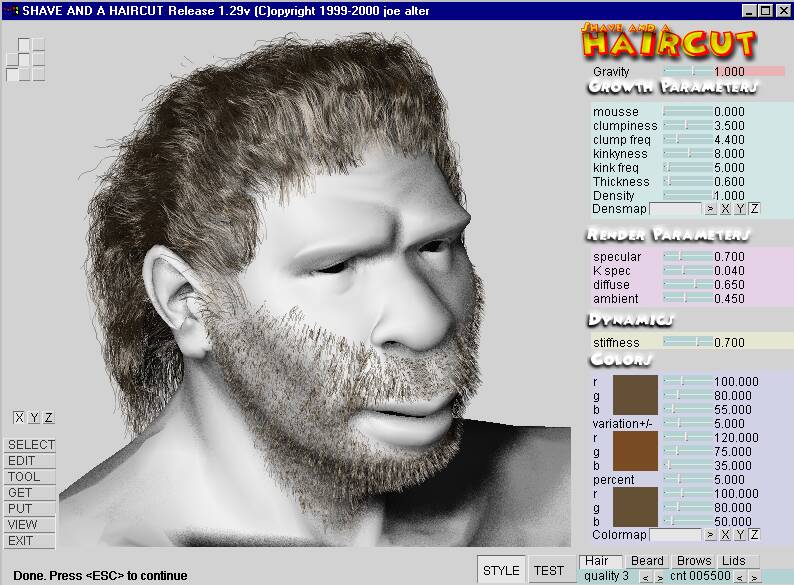
Here’s the patent abstract:
Methods for defining smooth and continuous coordinate systems in a volume comprised of a lattice structure of guide columns derived from arbitrarily modeled surface topologies involving polygons, nurbs, linear segments, and subdivision surfaces. Applications of these techniques in computer graphics and computer animation include: (1) the definition of pseudo-coordinate systems for use in creating geometry which must grow from said surface (2) the creation of a highly stable coordinate system involving guide columns in which Cartesian physical simulations may be carried out and rendered as well as deformed and rerendered if desired.
The application included videos, and also the flow chart below of the process showing steps to create and cause animated renderhairs whereby their motion is at least partially driven by the motion of the body or skin.”
The full text, and images, relating to the patent is here.

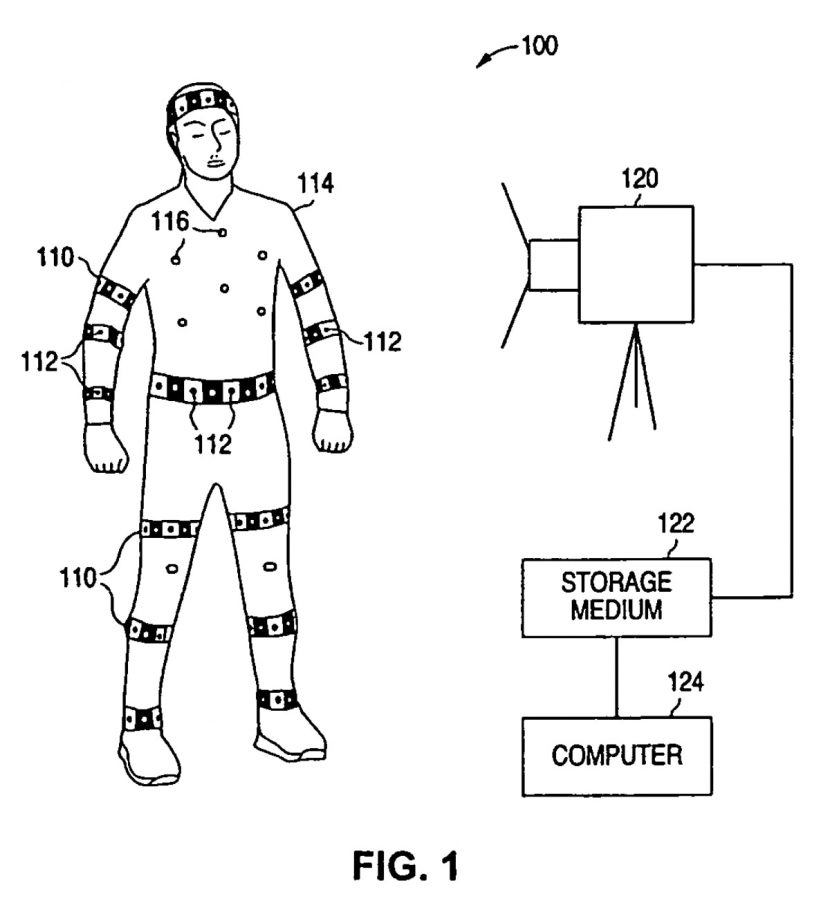

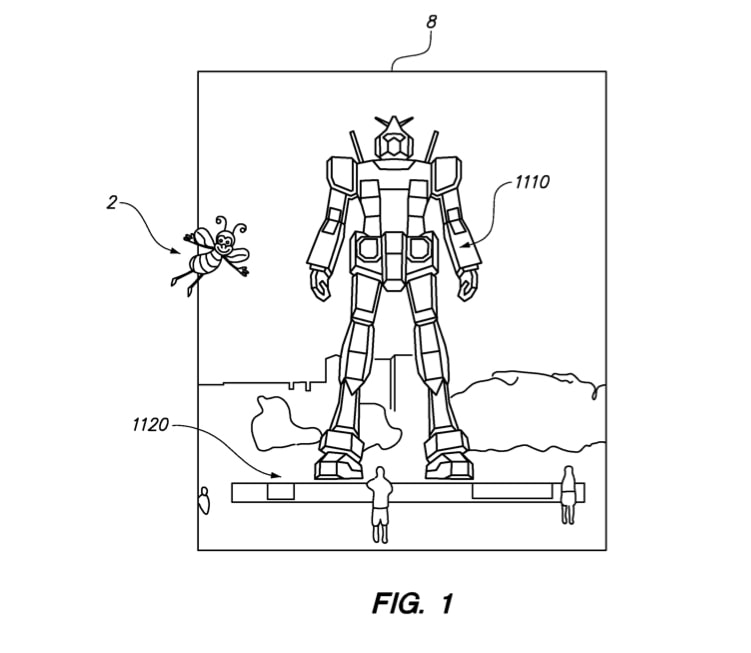
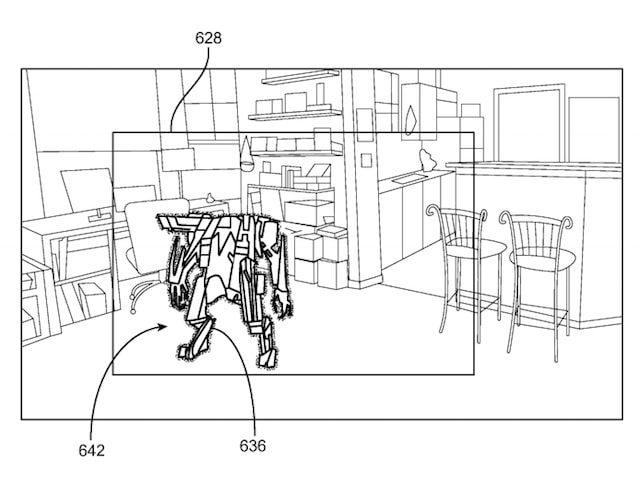

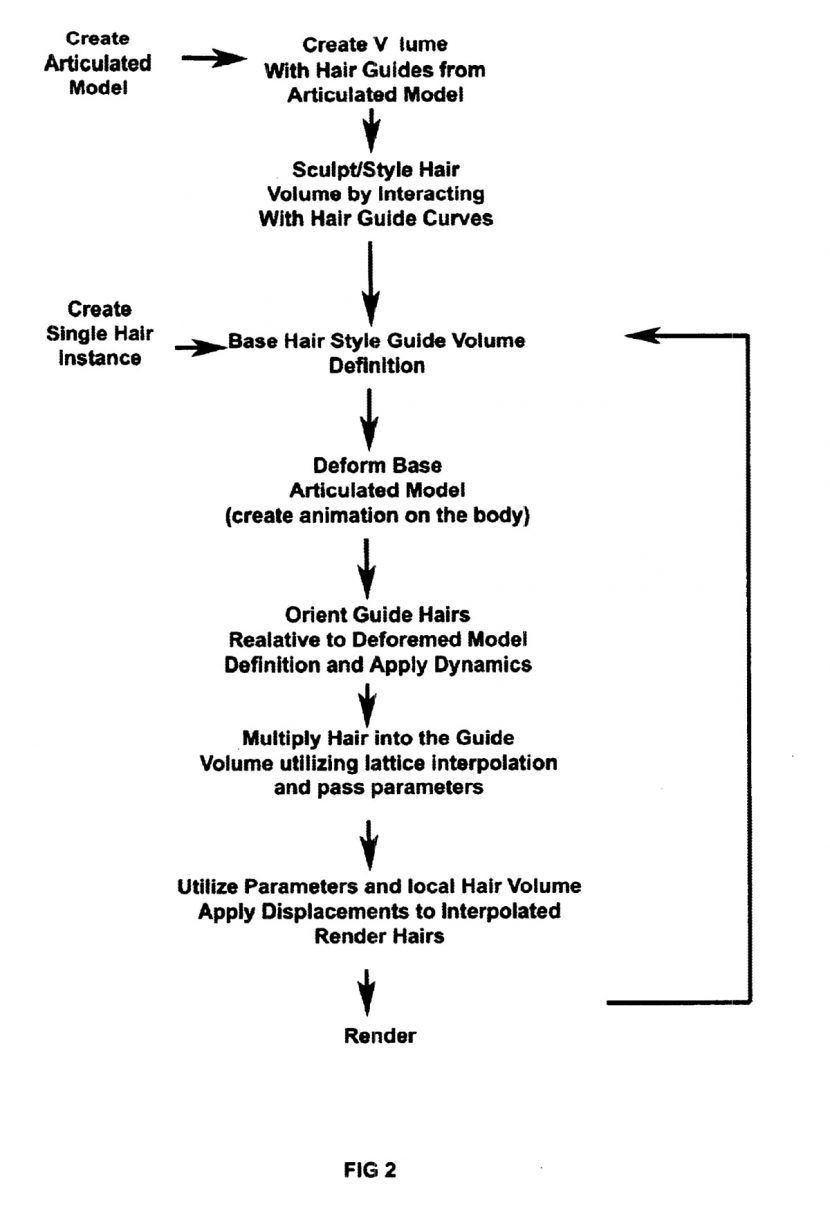
Anyone know where I can get a gray mocap suit?